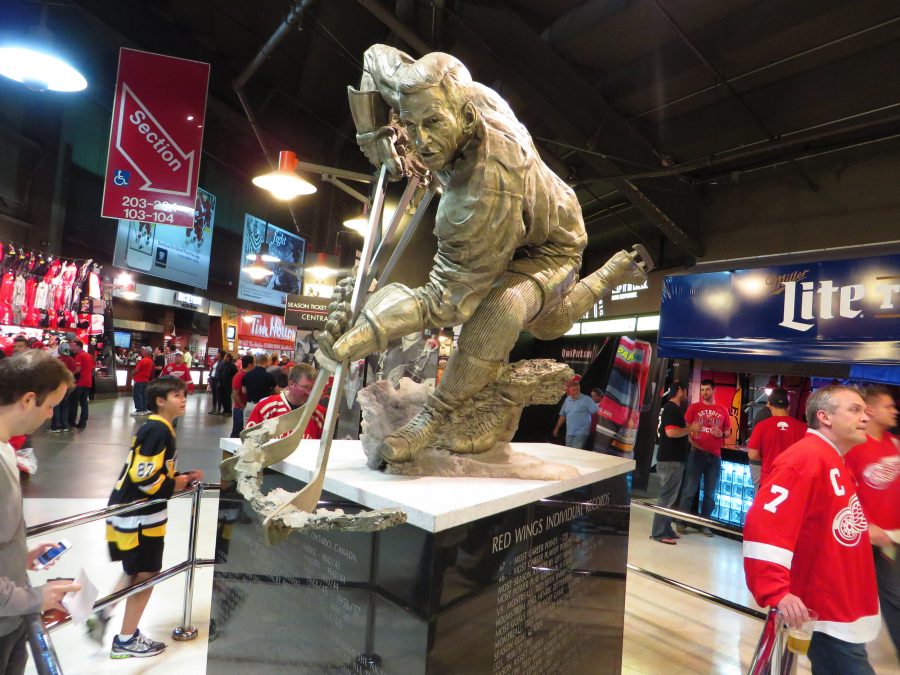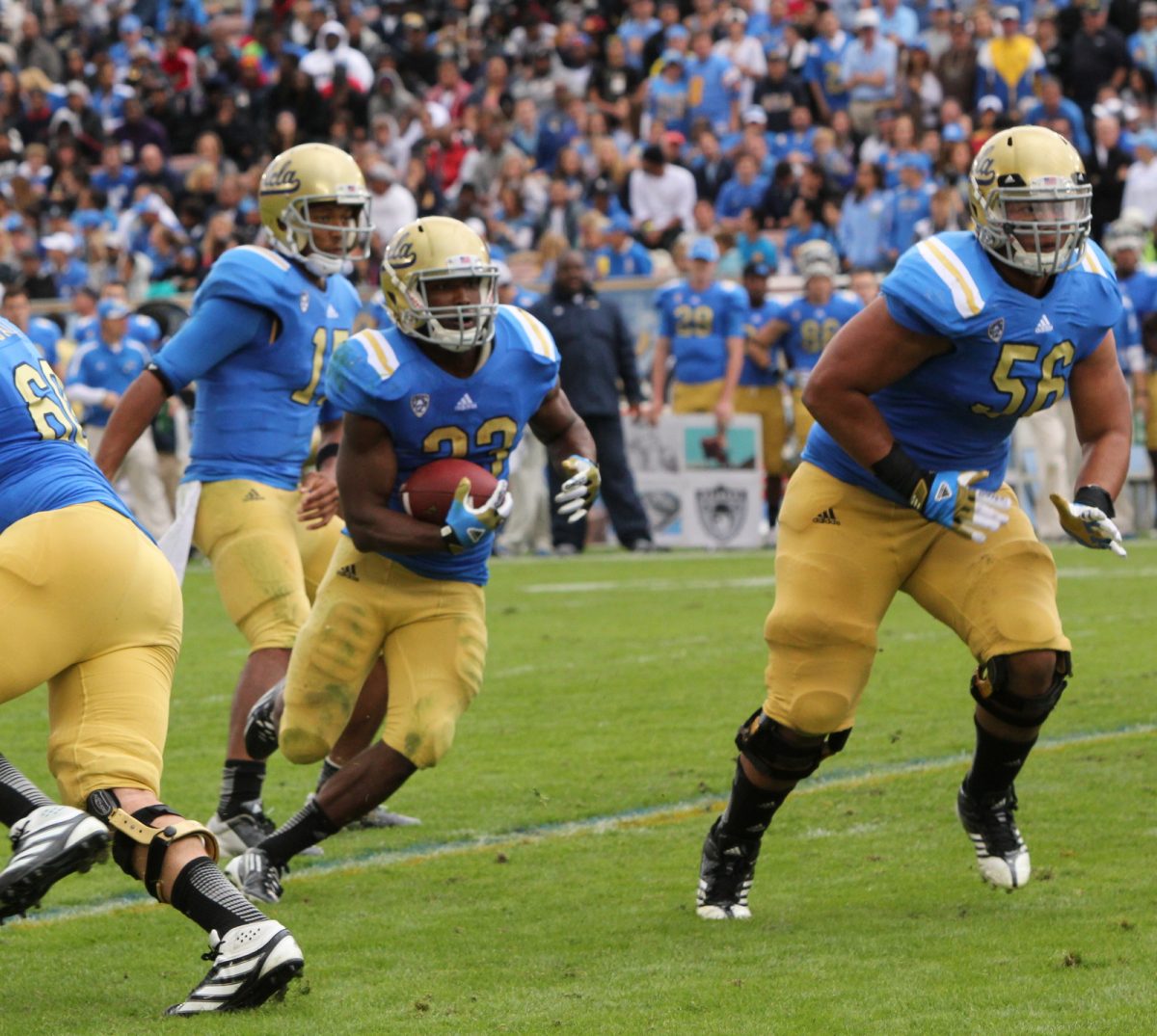Though he was small in stature, Ted Lindsay’s impact on hockey was nothing short of enormous.
A four-time Stanley Cup champion and the driving force behind the formation of the NHL Players’ Association, Lindsay passed away on March 4, at the age of 93.
Listed at 5-foot-8 and 168 pounds during his playing days, Lindsay earned the nickname “Terrible Ted” for a ferocious style that was just as much about physical play as it was about delivering wins and points. Spending most of his career with the Detroit Red Wings, the left winger achieved his greatest success playing with fellow Hockey Hall of Fame inductees Gordie Howe and Sid Abel on the Wings’ top line, known as the “Production Line,” a nickname that paid homage to Detroit’s auto industry.
Lindsay’s nicknames were “Terrible Ted” and “Old Scarface” because he played tough and sometimes dirty. That hell-bent style was reflected in the tiny ridges, bumps, wrinkles and puffy marks on his cheeks and chin that gave his face a hang-dog look, where he received most of his 600+ stitches during his career. Longtime Red Wings physician John Finley who was responsible for many of those stitches on Lindsay’s face said that he “had a face only a hockey mom could love.” But despite Lindsay’s rugged, no-nonsense style of play, his actions off the ice made his life a paradox.
Off the ice, he was a gentleman who had many friends and a philanthropist who became deeply involved in his community. On the ice, Lindsay was cocky and abrasive and would do anything to win. He was a highly unusual player in the post-World War II National Hockey League, a brainy boat-rocker who repeatedly challenged the conservative league establishment. Those qualities, plus his enormous talent, made him one of the most memorable and controversial players in NHL history, as well as a fan favorite for decades in metro Detroit, where he lived for more than 70 years.
Away from the game, Lindsay was patient, generous and even tender. Despite his superstar status, he drove through winter nights to appear at countless sports banquets across Michigan and Ontario. He devoted a lot of time to charity, highlighted by the starting of his own foundation, the Ted Lindsay Foundation, to raise money for autism research, when the 9-year-old son of a friend was diagnosed with autism. Since 2001, the foundation has raised more than $4 million for autism research.
Lindsay was only 5-foot-8 and 165 pounds, and people who met him often expressed surprise that someone so small could be such a terror. Lindsay punched far above his weight for 14 seasons with the Red Wings and three seasons with the Chicago Blackhawks between 1944 and 1965. When Lindsay was at his peak, in the early 1950s, the Wings were the team to beat in the NHL, winning four Stanley Cups in six years.
The Production Line, which consisted of Lindsay, Abel and Howe, was one of the league’s greatest trios and tormented the NHL from 1947 to 1952. In the 1949-1950 season, Lindsay, Abel and Howe finished first, second and third in league scoring, and the Wings won their first Cup of the decade. In 1949, during a seven-game semifinal playoff series against Montreal, the line accounted for 12 of 17 Red Wing goals. After Abel was traded in 1952, Lindsay and Howe continued their tear, accounting for roughly one-third of all Red Wing goals over a nine-year period.
Lindsay is also behind the celebrated NHL tradition of skating with the Stanley Cup on the ice by players after they win the post-season playoffs. It first happened at Olympia Stadium in Detroit in 1950 after the Wings defeated the New York Rangers in seven games, including a double-overtime victory in the seventh game. Lindsay spontaneously hoisted the shining trophy and skated around so fans could see it.
A nine-time All-Star, Lindsay led the NHL with 33 goals in 60 games in 1947-1948 and 78 points in 69 games in 1949-1950. His four championships with the Wings came between 1950 and 1955. Lindsay finished his career with 379 goals, 472 assists, 851 points and 1,808 penalty minutes in 1,068 NHL games. He was inducted into the Hockey Hall of Fame in 1966, had his No. 7 retired by the Red Wings in 1991 and was named one of the NHL’s Top 100 Players during the league’s centennial celebration in 2017.
But it wasn’t just his on-ice performance and influence that made Lindsay famous. It was something bigger than the sport of hockey itself. He, along with Montreal Canadiens Hall of Fame defenseman Doug Harvey, helped establish the framework for a league Players’ Association, giving players a voice to rebel and stand up to league owners.
At 27, Lindsay succeeded Abel as the Wings’ captain at the beginning of the 1952-1953 season.
Lindsay continued to mock opponents, push referees and argue with Jack Adams, the tyrannical Detroit coach and general manager whom most players feared. Lindsay blasted the disciplinary hearings of NHL president Clarence Campbell, a former war crimes prosecutor, as a “kangaroo court” and shocked NHL owners when he filed an antitrust lawsuit against the league during his attempt to form a players association in the late 1950s.
The suit was a daring move, which had consequences for Lindsay. He was stripped of the captaincy four seasons into it, after taking the lead in the movement and soured the once close friendship between Lindsay and Howe, who voted against the union. Lindsay’s actions represented everything Campbell abhorred in a hockey player — cockiness, irreverence and disrespect.
Undeterred by losing the captaincy, Lindsay recorded his best statistical season in 1956-1957, putting up 30 goals and 85 points in 70 games. But as further punishment for his advocacy and part of a plan by owners to sabotage the certification of the Players’ Association, the league-leading Red Wings dealt Lindsay to the last-place Chicago Blackhawks on July 23, 1957.
By 1958, the campaign for an association had ended, though the NHL met some of the players’ demands. In an out-of-court settlement on Feb. 5, 1958, the NHL promised several conditions, including a $7,000 minimum wage, an increase in pension benefits, increased hospitalization benefits, a limit on the number of exhibition games and the player being the sole judge of his physical fitness to play after injury.
The owners, however, succeeded in persuading the players to disband their organization in 1959, and Lindsay retired at the end of the 1959-1960 season.
When he retired for the first time, the only players who had amassed more points than him were two all-time greats, Howe and Montreal’s Maurice “The Rocket” Richard.
Four years later, he returned to the ice for Detroit for a final campaign at the age of 39 at the urging of his old linemate Abel, who had become the Red Wings’ head coach and general manager.
Lindsay’s efforts on behalf of the players set the groundwork for the current NHL Players’ Association, which was formally ratified as a labor organization in 1967.
In 1966, Lindsay again displayed his off-ice class by refusing to attend the men-only Hockey Hall of Fame induction ceremony, since he was not allowed to bring his wife and children. The rules were changed the following year, allowing women to attend.
In 1977, Lindsay was named general manager of the Red Wings, who were struggling to make the playoffs. Soon after taking over as general manager he appeared in television commercials promoting the slogan, “Aggressive hockey is back in town.”
A year later, the Wings made the playoffs for the first time in nine years and won a playoff series for the first time in 12 years, earning Lindsay the prestigious honor of the NHL’s Executive of the Year. Late in the 1979-1980 season, he named himself head coach, but was forced out 20 games into the following season after a dismal 3-14-3 start by Detroit.
In 2010, the NHL Players’ Association chose to acknowledge Lindsay’s early efforts by renaming its Lester B. Pearson award in his honor. Voted by the players, the Ted Lindsay Award has been presented to the league’s most outstanding player for the past nine seasons.
The legacy that Lindsay left behind was indeed a paradoxical one.
His tough, ferocious playing style and demeanor on the ice were countered with the grace, respect and social activism that defined him off the ice.
He gave the players a voice in an era during which the owners and executives ran the league like a “dictatorship,” according to Lindsay himself. He was a one-of-a-kind talent, considering the era he played in. Beyond his belligerence, he was an excellent skater, shooter and passer. He was, in many respects, the perfectly well-rounded NHL player — a highly skilled leader who is the craziest and hardest-working guy on the team.
Players like Lindsay rarely come around these days, but if they do, they will thank Lindsay for their unique playing style. When players skate around hoisting the Stanley Cup, they will thank Lindsay. When the Players’ Association gives players more bargaining power and better conditions, they will thank Lindsay.
The Red Wings, the NHL and the entire hockey community lost a true legend and ambassador of the game on that Monday morning on March 4, 2019.








